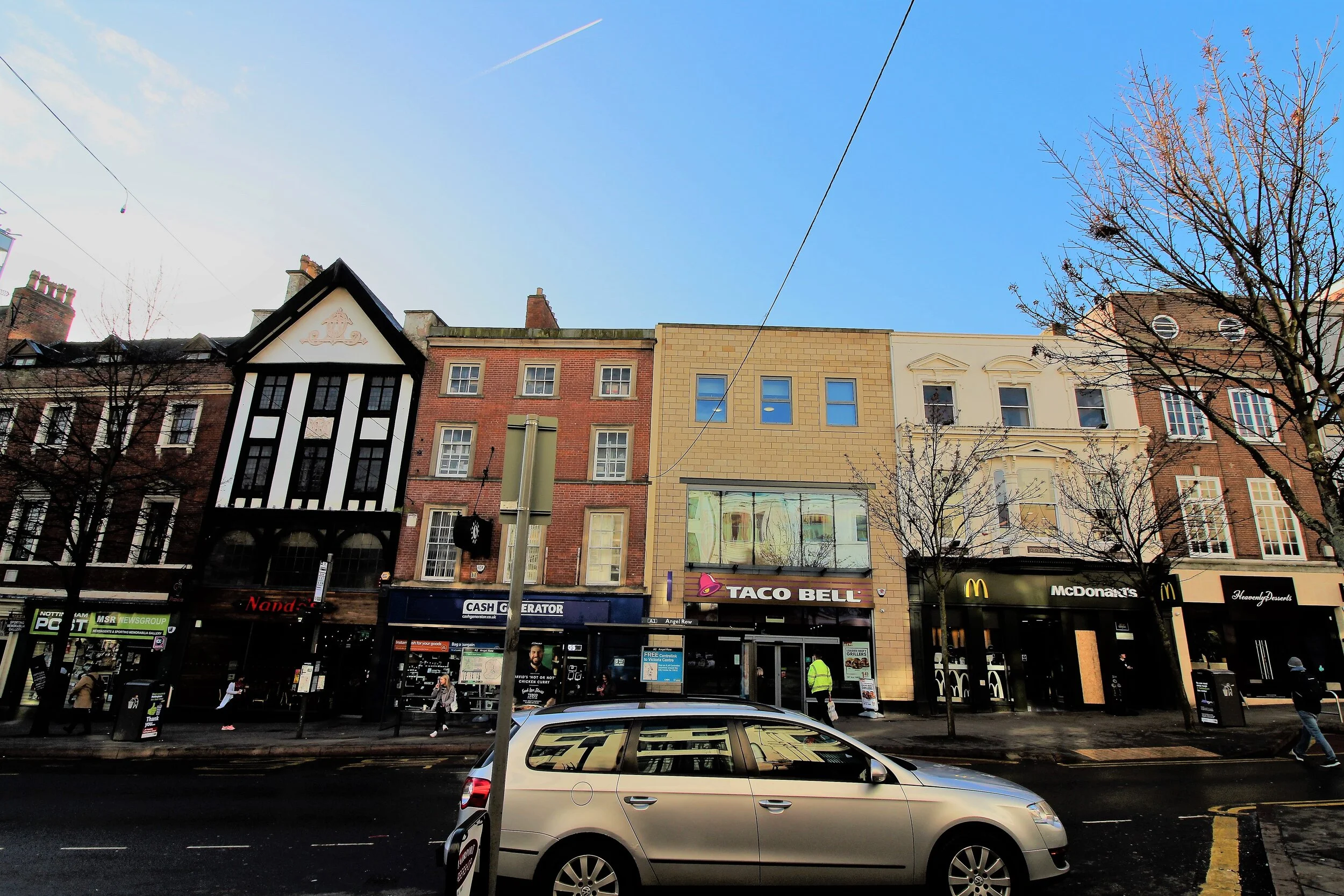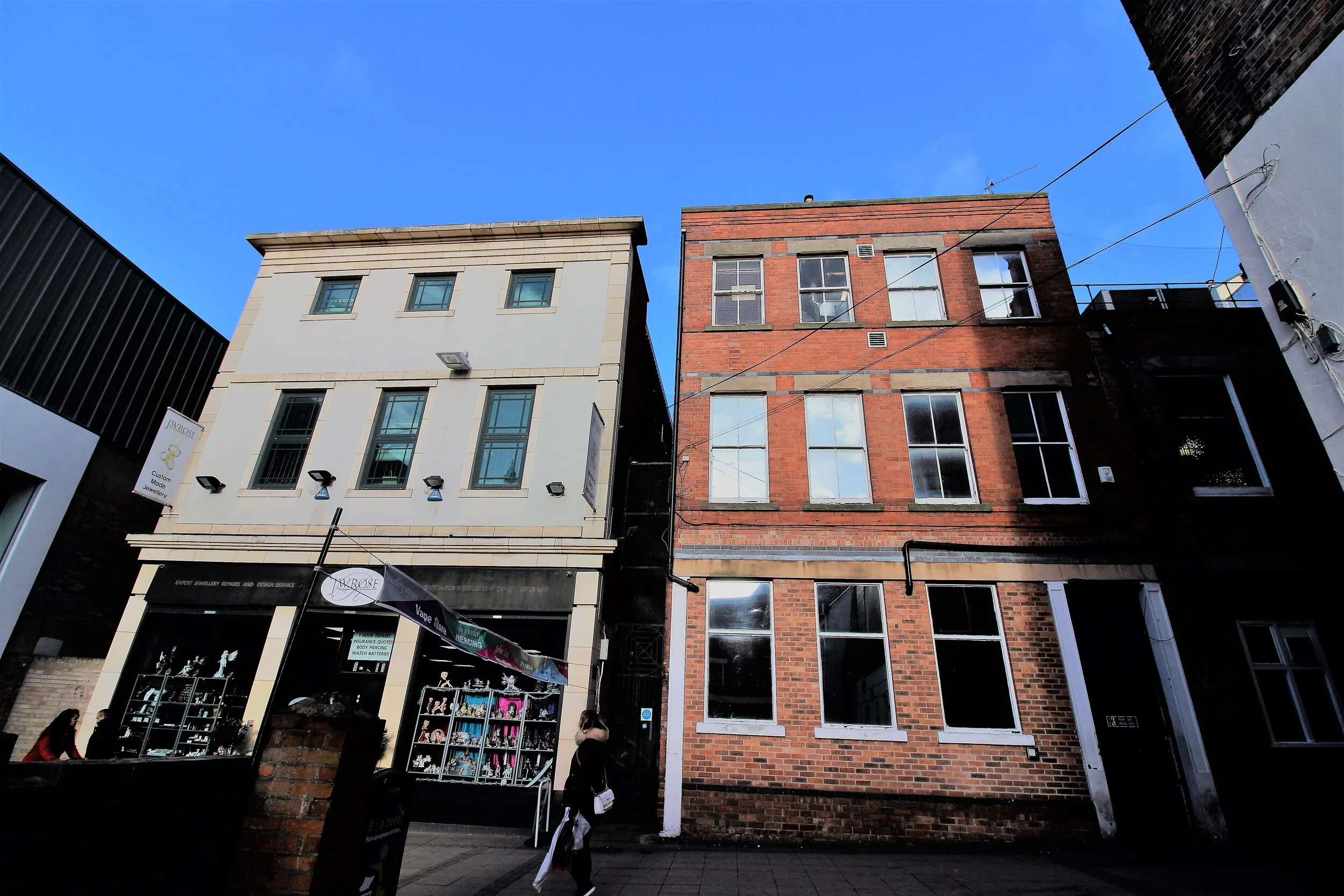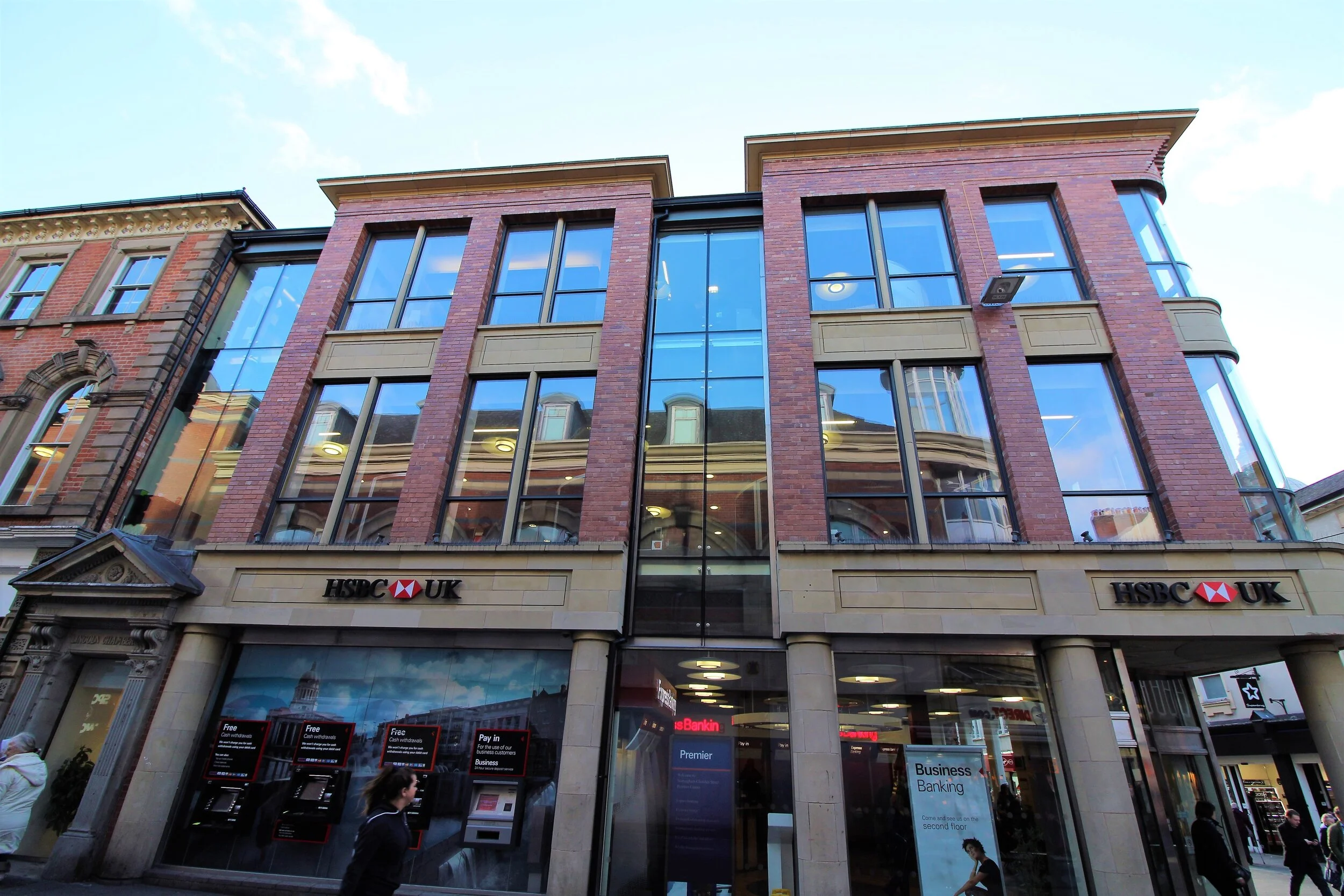Above: Historic buildings in Nottingham, with a repetition of mansards and pitched roofs.
Below: This modern building applied a treatment that creates the appearance of smaller volumes with mansards and pitched roofs, in keeping with the geometry of the historic buildings in its setting (see image on the left). Gable ends give presence to the street but the mansards help reduce the overall mass and dominance of the building, as well as adding to the visual interest.
Nottingham was historically a market town. All residential, commercial and retail activities took place together in the medieval period. The later growth of the town was restricted by the tight boundary of the town wall. Therefore, buildings have been repurposed and reused in Nottingham over time as uses have changed reflecting this outwards growth restriction. This has resulted in the historic buildings we see today which have been shaped by many centuries of change. In the 19th century the western part of the city centre around Old Market Square became the retail heart of the city whereas to the east the character was defined the needs of the Lace Industry in the Lace Market of large warehouses built in the wealthy residential part of the city.
Those properties in the western part of the centre that were not originally built with ground-floor retail have been modified as residential use has declined in the centre and retail has increased. The current pattern is of ground floor retail with large amounts of glazing and a general domestic character on the upper floors with a smaller ratio of glazing to walls. Historical trends have resulted in a compact, medium density city with a mix of narrow, elongated facades.
Upper floors were used for accommodation and administration, and façades incorporated smaller windows in the upper floors, following classical architectural orders. This can also be seen in the more modern infill of ‘Taco Bell’, which relates well to the historic pattern although the material used is not so successful in terms of texture.
Historic buildings in Nottingham are often separated by narrow passages and alleyways.
This modern building has a façade design strategy that responds to the layout and creates the appearance of smaller volumes in keeping with the size and proportions of the setting. It also has a more prominent ground floor and the top is finished with a proportionate cap.
3.2 Geometry & mass treatment
The overall geometry of buildings is closely related to their function and the purpose of its various parts. However, there are times when designing purely with function in mind can lead to form and massings that do not sit comfortably in the site context, either because the massing is oversized or the proportions do not respond to neighbouring buildings. Feasibility studies for urban settings are always best approached with an outwards-in philosophy, confirming what type and size of the geometry is suitable to the site before attempting any other design strategy. Streetscapes often have geometries that repeat more than others. Buildings that contrast with the geometry tend to stand out, forming small landmarks that help people navigate the city. Geometry can be a strong design strategy but mimicking buildings that are the exception to the rule can have the adverse effect of undermining the prominence of unique historic buildings.
Modern commercial developments tend to have larger massings and volumes than buildings from historic periods. However, it is possible to manipulate the massing of new large buildings to achieve designs that sit comfortably within their historic settings. For example, façade treatments can make a large volume look slimmer, shorter or smaller than it actually is. A good way to do this is splitting façades vertically and working with rhythms.
Cities, streets and façades have a natural rhythm given by the repetition of their parts and their position in space. For example, equal windows with equal separation will have a monotone rhythm; but if the central windows are different in size these can act as an accent. Façades have a vertical and a horizontal rhythm. If the top floors have smaller windows than the lower floors, a variation is created in the vertical rhythm of the building.
Design Criteria
3.2.1 The geometry of the proposals is informed by the general urban context of the scheme and the immediate surrounding environment, and not solely led by function.
3.2.2 Proposals are formed by geometrical component parts that relate to each other in terms of size, position and separation, and that follow specific and clear design rules.
3.2.3 The rhythm of the surrounding environment has informed the façade proposals.
3.2.4 The proposed façades help make the mass treatment legible by adding hierarchical variation.
3.2.5 The proposed façades respond to their immediate environment in scale, form and rhythm. This means each aspect of the building is treated according to its setting.
3.2.6 Bottom, middle and top floors will be differentiated following the trend of the setting.





